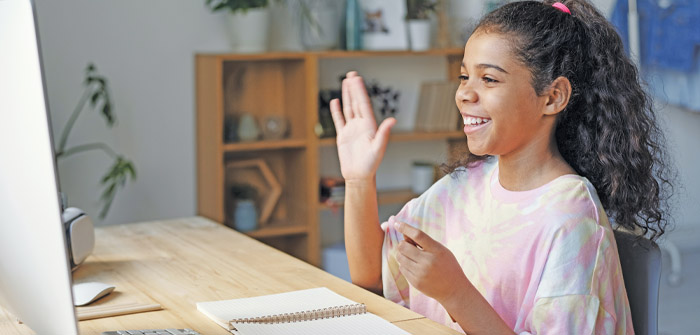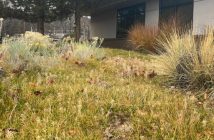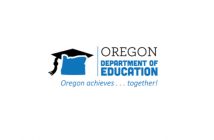(Online learning is the reality again this fall | Photo by Julia M Cameron from Pexels)
With August upon us and the start of the Oregon school year just a month away now, parents across the state have been collectively holding their breath in anticipation of sending their kids back to class. However, on July 28, the hope of live instruction dimmed, as Governor Kate Brown released a new set of metrics based on COVID-19 results that must be met locally and statewide before both public and private schools will be allowed to bring students back to campus. And then on July 31, the Bend-La Pine School District announced that classes would indeed be online only again until at least November.
The Bend-La Pine School District had been planning an “ABC approach” for students, which would have had students in grades K-5 back to campuses full time for in-person instruction with social distancing measures in place; grades 6-12 in a blended situation with a mix of in-person learning on campus and remote learning with classroom teachers; and an online option for students in grades K-12 who are not able to, or would prefer not to, return to campus in person. However, in response to Governor Brown’s announcement, Interim Superintendent Lora Nordquist and Board of Directors Chair Carrie Douglass posted the following on the district’s website as of last Friday night:
“Tonight we made a decision about reopening schools in order to provide clarity for our families and staff and to help our community plan for the fall. Our board of directors, with the support of our school administration, determined that all Bend-La Pine Schools’ students will begin the school year with Comprehensive Distance Learning and will not begin with in-person learning. In addition, the board voted unanimously to start the school year on Monday, September 14 in order to give teachers additional time to prepare and train to provide instruction online. While we want nothing more than to return to school and offer instruction to students in person, our community does not currently meet the health measures required to reopen schools, the rates within Deschutes County are rising and we believe it’s important to provide as much information as we can to help our families prepare. The decision to return to brick-and-mortar classrooms will be made every six weeks, with collaboration from school leaders and will be based on current spread of COVID-19 within our county and whether our community is meeting the established state metrics outlined to reopen physical school buildings.”
Nordquist has urged the community to follow the guidelines set forth to slow the transmission of COVID in order to expedite getting kids back into classrooms. “We need the help of our community. Deschutes County needs to make significant progress towards reducing COVID-19 spread in our community before we can transition to in-person learning. Our community must come together to significantly decrease the spread of COVID-19 in Central Oregon. We highly encourage you and our community to rally behind the reopening of schools by fully adhering to the State guidelines designed to halt the spread of the disease.” Nordquist said the district is committed to providing weekly updates from now through the fall, and it has created a website with FAQ’s about reopening the schools.
With so much uncertainty over the past few months regarding schooling, options such as tutoring, alternative programs like charter schools, private schools and cohorts or pandemic pods (small groups of students who gather together to learn collectively under the supervision of a parent, tutor or other responsible party) are quickly gaining in popularity.
“Admissions have increased dramatically here. We’ll be at record enrollment in the fall, with wait lists in lots of grade levels,” said Barb Cartmell, Director of Admissions of Cascades Academy, a private pre-K through 12th-grade tuition-based school in Bend. “We figured enrollment might drop because of finances. But instead, we are being flooded with new students. People want their kids in a small private school, where they will be as safe as we can possibly make them.”
“We have huge concerns over learning losses. We saw big detriments last spring,” said Audra Bohn, Director of Bend’s Sylvan Learning Center, which offers a variety of live and online tutoring and instructional programs. “We work with K-12, and it’s different with each age group. But the overwhelming theme is it’s hard to meet everybody’s needs. There is a wide spectrum of feelings about COVID; we have to find the balance between safety and schooling needs.”
Bohn said that at Sylvan, the staff is trying to put together flexible tutoring options to help families during this time. “We are going to put out programs where kids can come in for time chunks: 2 hours, 4 hours, 6 hours, etc. This would help kids who are distracted and have trouble with online learning; they can do better with a live person. This would be to help students stay on track.”
If a parent is going to home school, Bohn said she recommends utilizing other resources and opportunities to bridge the gap of what students will miss from a full-time, in-school curriculum. “Think about utilizing the district’s online option, or look at a charter school with a clear curriculum to help parents at home,” she said. The three charter schools Sylvan recommends are Oregon Family School K-12 Virtual Charter (oregonfamilyschool.com), Baker Web Academy (bakercharters.org) and Silvie’s River Charter (sites.google.com/silviesrcs.org/srcs/home).
In a press conference held on July 24, the Centers for Disease Control strongly urged that all schools re-open for live instruction in the fall. The CDC released new science-based resources and tools for school administrators, teachers, parents, guardians and caregivers. In a press release, Robert Redfield, M.D., the CDC’s director, said, “An essential part of recovery is getting our kids back in school. The default needs to be that schools are fully open and operational in the fall so that students can resume full-time learning. In areas where there are hot spots, remote and distance learning might need to be adopted for a certain amount of time. But the research and science continue to suggest that it is safer, healthier and better for students to be in school full time. It’s not a matter of if it should be done, but rather how it must be done. The urgency is real. Personal engagement between teachers and students and among students and their peers is more important than ever.”
As COVID continues to spike in many areas across the country, however, governors are deciding to keep kids at home until the number of cases drops. The good news is that schools have had time to improve upon virtual teaching methods since the closures last March. At that time, educators were forced to scramble to get online instruction up and going as fast as possible. “We did well in quickly pivoting last spring to remote, but we don’t want to have to do that again,” said Cartmell. “We are planning simultaneously for both on-campus learning and remote learning.” She added, “I’m really proud of our planning for the start of the school year since last spring. We immediately put together a committee of school board members and administrators called Pathways Forward. We’ve been meeting weekly since last spring, really intensively planning for this school year while finishing the last school year.”
In Bend-La Pine Schools, multiple teams have been put together to work on various schooling scenarios, including developing materials and units for remote learning for all students, and planning and hosting professional learning for staff to help construct standards of practice for teachers. The district is also ensuring that it has enough iPads and hotspots for students who need them, and is planning for the delivery of meals if needed. In a July 28 statement, the district reported that since last spring, operations supervisors have been meeting to look at logistical challenges related to reopening, and a team of principals, teachers and counselors met several times in June. In July, a core team of district leaders met to complete parts 1-3 of the ABC plan, and the team has now been expanded to include employee association presidents and school board representation.
Part of the planning for the fall term in schools has necessarily involved physical changes to campuses and classrooms to create the required social-distancing space, from rearranging furniture to pitching tents, so that when students are allowed back in, schools will be ready. “We’ve rented a large tent that we put up outside; that will be a flex space. We envision using it as an art class space, or a specialist space, and ordering collapsible camp chairs for each student. Every student can just pick up their chair and bring it outside and we’ll have an instant classroom,” said Cartmell. “What used to be our multipurpose room is now our kindergarten space. It will allow us to have more than the 35 feet of required space, because kindergartners need a lot of space. We will definitely use the cohort model of keeping students in stable cohorts, so if there is a case of COVID, we can isolate the other students in that space. We are doing what we ask our students to do all the time: be flexible, resilient and think outside of the box.”
Whenever live instruction does resume, there will be mask and hand-cleaning requirements in place. On June 30, the Oregon Health Authority (OHA) and the Oregon Department of Education (ODE) published Ready Schools, Safe Learners, a 56-page report offering guidance for the coming school year. The report was updated on July 22 — as a result of Governor Brown’s newer, stricter enforcement of mask wearing — to make face coverings a requirement for all students in grades kindergarten and up and all staff in K-12. In response to the report, Colt Gill, director of ODE and Patrick Allen, director of OHA, issued the following message:
“The 2020-21 school year requires a level of planning, iteration, communication and collaboration like none that we’ve known or led during our years of service in Oregon. This guidance represents thousands of hours of work from teams at ODE and OHA and the sensemaking input of thousands of Oregonians, including school leaders, teachers, health professionals, community partners, families and students. It is rooted in the research we’ve digested across the world and within the U.S. OHA epidemiologists have helped to create and have vetted this guidance. We have exchanged thinking with several other state education agencies and shared notes with national experts to inform and test our thinking.”
For parents scratching their heads wondering what to do with this new development, it would seem that flexibility will be essential in crafting a successful school year for children. “Last spring, parents were told not to worry about students getting behind, that they’d catch up in the fall, said Bohn. “But that is not realistic; it’s an impossible task to expect schoolteachers and districts to catch up students in the fall. Parents are going to have to take a more active role in keeping kids on track.”
bend.k12.or.us • locations.sylvanlearning.com/us/bend-or • oregon.gov/ode/students-and-family/healthsafety/Documents/Ready • cascadesacademy.org • cdc.gov





